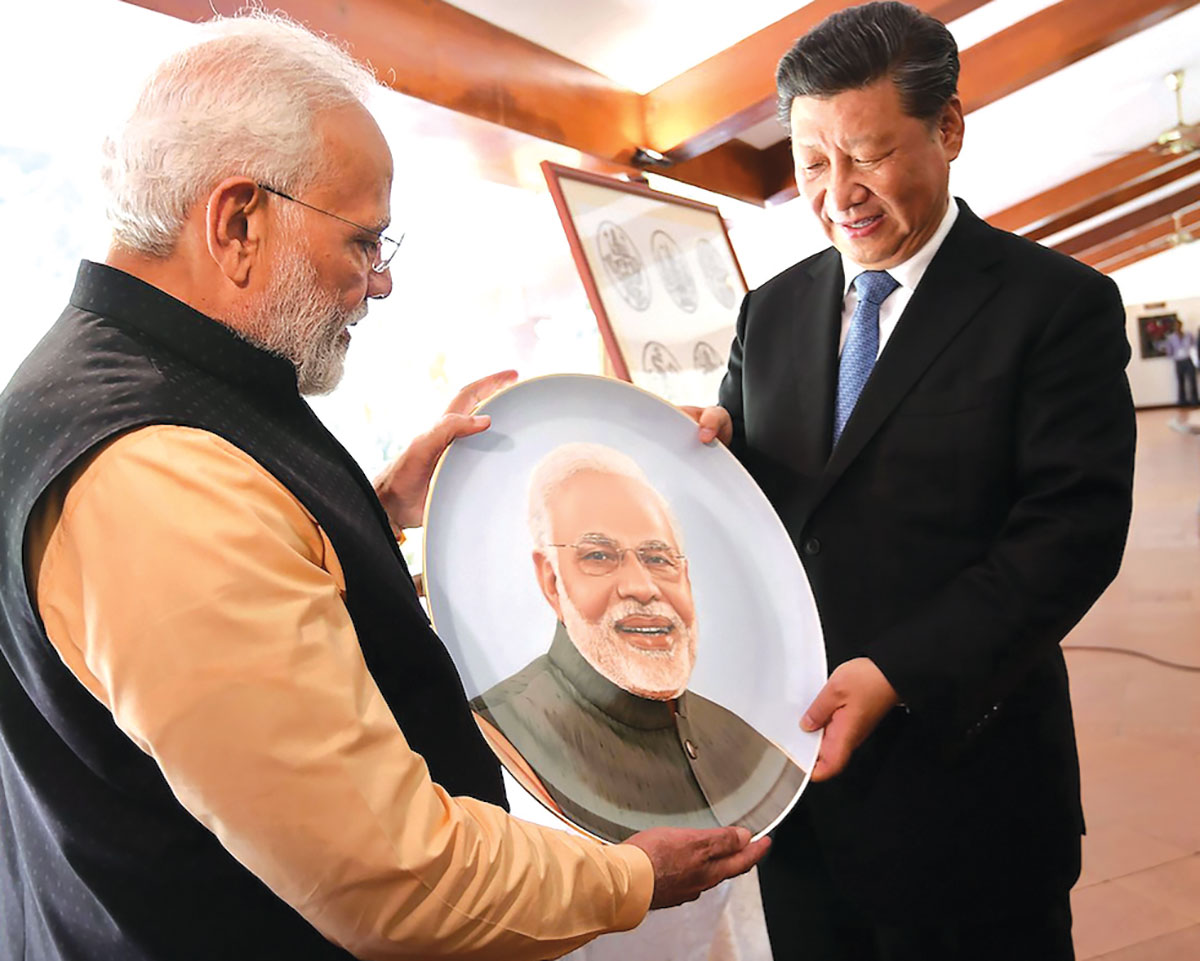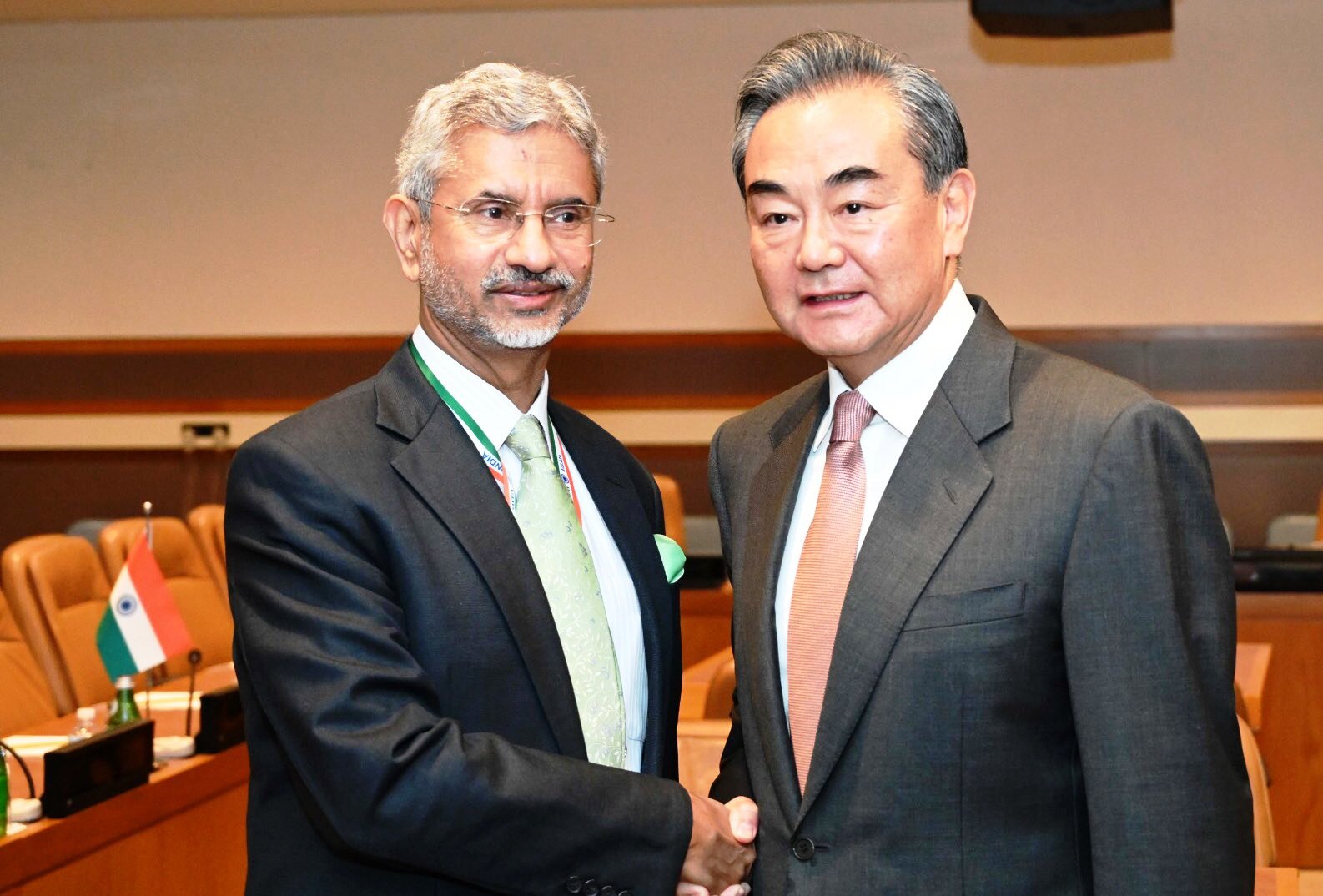by Asad Mirza
It may sound ominous but the West seems to have lost the economic battle to China, as China knows that more than territorial control it is the economic control which will make it the global superpower.
At present, the whole world it seems is influenced or being governed by signals emanating from the eastern world, instead of the western world, as has been the historic precedent. It seems that the Chinese dragon, which for ages had been trying to rule the world has been active quietly and is now ready to devour the whole world.

The latest reports reveal that China has threatened total economic war by dumping US Treasuries, in the global market. On September 3, Global Times, the Communist Party tabloid, reported that Beijing was “likely” to sell some or all of its US Treasury holdings. More importantly, the paper suggested the United States might for the first time ever default on its debt obligations. This latest salvo means China is certainly trying to destabilise the United States, and it looks as if it’s about to declare total economic war on America.
In this march ahead, China was helped by the Coronavirus, too. Some American politicians even blamed China for the virus and its spread over the world. But the reality which no one could ignore is that China seems to be at a point where it is going to double its GDP and income in the current decade and take the country to the forefront of the global economic power system.
China has climbed to No 2 in the world, with a GDP of US$ 13.1 trillion, just behind the US. Forecasters expect that growth of the Chinese economy by 6% in 2020 will get it to the stated goal of doubling the economy from 2011-20, by next year.
Economic analysts opine that the issues in 2020 could be a turning point for China’s growth. There are plenty of reasons to expect that China’s drive toward No 1 will have strong momentum, which will be driven by strengthening those factors which pushed the country’s growth over the past decade, plus the economic edge by which it has overtaken the western economies during the ongoing pandemic.
Chinese strategy
The Chinese expansionist programme began in the late 1970s, with a move to more open markets. This coupled with a strategic and cunning central planning, supported by party-controlled cheap labour, a devalued currency and a robust production system helped it to establish itself as world’s manufacturing centre, with a capacity to produce every conceivable item at a lower cost.

This was supported to large extent by building-up a technologically expert young population, managed through central educational system added by huge intellectual inputs at every step. These tactics changed the economy from a slumbering rural one to a prospering diverse superpower.
To a large extent, for most of China’s gains, the West too itself is to be blamed. Facing environmental challenges they outsourced most of their production to China, utilising the cheap labour force and devalued currency. But China outwitted them at their own game. They should have been cautioned by the increasing strength of the Chinese Communist Party, which contrary to the Russian Communist Party, gained from strength to strength while managing its iron grip over its population.
China’s Plans
According to Morgan Stanley’s forecasts, China is on way to build a series of super cities all over China, some 23 of these super cities will have populations greater than New York and five alone will combine to house 120 million people.
By bringing young workers from the countryside into the massive population centres, China will be able to tighten its grip over the current production systems at the least cost.
China also is investing heavily in 5G technology as part of the modernisation and urbanisation efforts. The purpose is to get artificial intelligence into virtually every aspect of your living world, which in other words means more state control.
On its path to become a global economy No1, China had initiated many programmes, which at first seemed innocuous alone, but when analysed correctly they all point to a unified expansionist strategy.
China’s Global Presence
Currently, the Chinese footprint extends from Djibouti-a strategic maritime chokepoint in Africa to Ecuador-home to South America’s third-largest oil reserves.

This footprint was established by enticing the poor Third-world countries with a soft loan or a bilateral aid package, which, in a real sense were tools to make these countries economic vassals of China. As these countries were unable to pay loans, they got themselves into a never-ending debt trap. To cancel debts Chinese enterprises overtook the assets in different countries and thus these countries were deprived of their own natural resources and land. In fact, Chinese entities in these countries became de-facto rulers.
BRI Programme
China very cunningly started the global ‘Belt and Road Initiative’ (BRI) programme, which is strategically, politically and economically aligned to Chinese interests only. These initiatives are not for establishing friendly relations with other countries but to woo dependents, especially in areas either neglected by the West or in the Western sphere of influence.
The global dimension of BRI initiatives seemed to be focused on replacing the existing political, military and economic dimensions of the West’s liberal democratic order with one dominated solely by the Communist Party of China.
The BRI was followed with a maritime version, presumably to connect Chinese ports on the South China Sea to seaports in the Indian Ocean, but eventually, the programme was expanded to include the Middle Eastern ports and ultimately reached European ports.

Critics of China’s BRI program point out that Chinese loan agreements lack transparency and that contracts sometimes serve China’s interests in a racketeering way, oblivious to local concerns. Sri Lanka, for instance, after having failed to meet its debt obligations to China, ceded the port of Hambantota to Beijing. Venezuela delivers oil to China instead of its worthless currency.
China, as the world’s largest importer of oil, will be able to diversify its sources of petroleum as a consequence of several bilateral BRI deals. China most likely also hopes to secure political benefits through BRI arrangements.
Countries participating in China’s BRI, and generally friendly to the US and its allies, might shy away from supporting the West’s national security concerns for fear of losing large Chinese investments in their local economies.
Critics also accuse China of favouring BRI contracts with countries that have authoritarian regimes. Beijing has invested in Zimbabwe in Africa, Laos in Southeast Asia, and Venezuela in South America. A new, particularly ominous Western criticism is that China distributes its facial recognition technology to BRI-affiliated countries where Chinese surveillance systems have been installed, in states such as Bolivia, Venezuela and Ecuador.
China and Human Rights
Another serious issue is China’s disregard for the human rights of not only Chinese citizens but even of its host nations.
Plenty of evidence is proof that most BRI participating states refrain from criticising China’s poor record on human rights. For example, no Muslim country has raised its voice against the near-genocidal mistreatment of millions of Uyghur’s in China. Not even one Muslim-majority state voted to condemn the treatment of the Uyghur’s in support of the West’s UN resolution to publicly sanction Beijing.
China and India
The two neighbouring countries have fought two wars, so far. The bilateral trade between the countries as per 2019 figures stood at 92.68 billion dollars. China accounted for over 5% of India’s total exports in the financial year 2019-20 and more than 14% of imports. Meaning, India runs a huge trade deficit with China, the biggest exporter to India. Over 14% of India’s imports in FY19-20 were from China.
The Chinese companies dominate the huge Indian smartphone market, besides being the largest active pharmaceutical ingredients supplier to India.

In response to Chinese aggression over the last six months, the Indian government has banned many popular Chinese mobile apps, but they are still available on servers, only removed from the play stores. Moreover, these knee jerk tactics are not going to provide any succour to Indian industries. During the Corona crisis, with supply chains affected and buyers vary of Chinese products, many trade pundits had predicted shifting of the manufacturing sector to India. But they failed to see that Indian industry stands no in competition to the expertise and technological advancement of the Chinese companies. Further, to reach that level Indian may need another 15-20 years and by that Chinese global dominance will be complete.

It may sound ominous but the West seems to have lost the economic battle to China, as China knows that more than territorial control it is the economic control which will make it the global superpower.
(Asad Mirza is a senior journalist based in New Delhi. In his career spanning more than 20 years, he was also associated with BBC Urdu Service and Khaleej Times of Dubai. Views are personal.)















